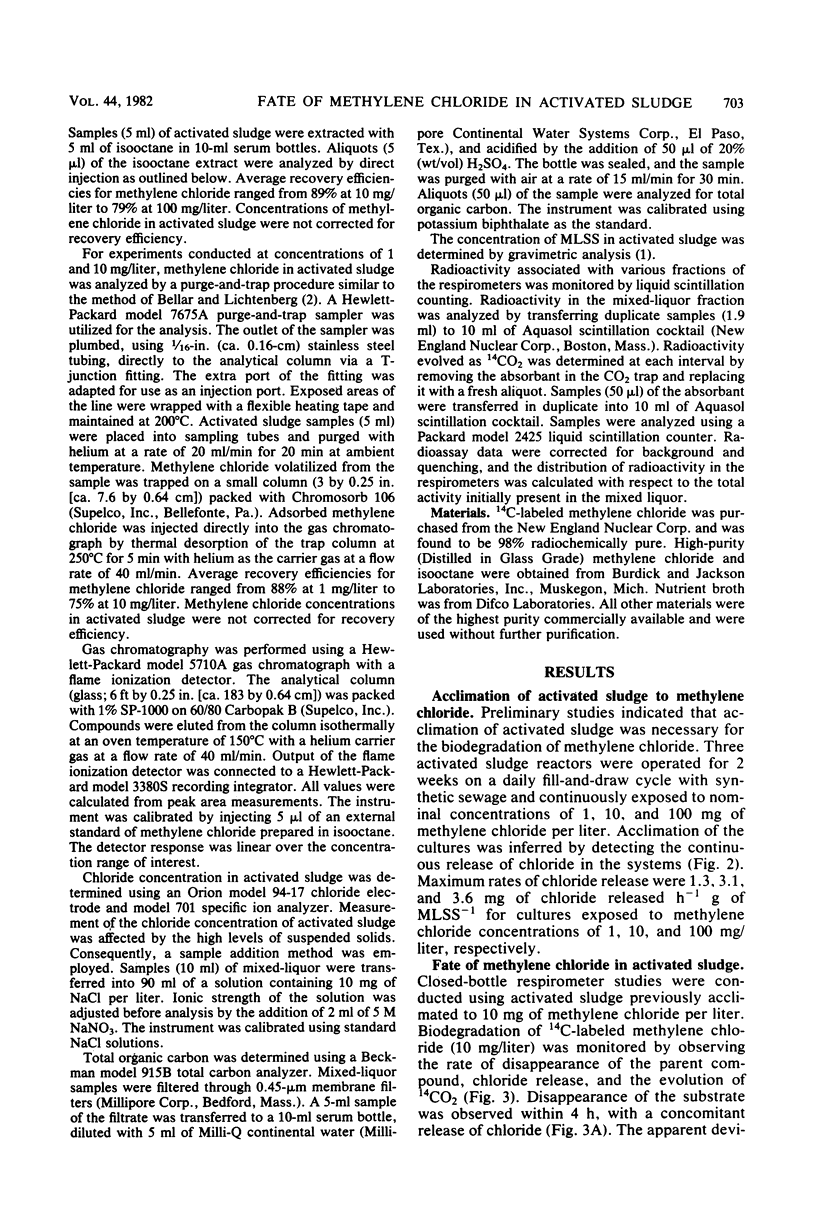Abstract
Activated sludge obtained from a municipal wastewater treatment plant was acclimated to methylene chloride at concentrations between 1 and 100 mg/liter by continuous exposure to the compound for 9 to 11 days. Acclimated cultures were shown to mineralize methylene chloride to carbon dioxide and chloride. Rates of methylene chloride degradation were 0.14, 2.3, and 7.4 mg of CH2Cl2 consumed per h per g of mixed-liquor suspended solids for cultures incubated in the presence of 1, 10, and 100 mg/liter, respectively. Concentrations of methylene chloride between 10 and 1,000 mg/liter had no significant effect on O2 consumption or glucose metabolism by activated sludge. A hypothetical model was developed to examine the significance of volatilization and biodegradation for the removal of methylene chloride from an activated sludge reactor. Application of the model indicated that the rate of biodegradation was approximately 12 times greater than the rate of volatilization. Thus, biodegradation may be the predominant process determining the fate of methylene chloride in activated sludge systems continuously exposed to the compound.
Full text
PDF






Selected References
These references are in PubMed. This may not be the complete list of references from this article.
- Brunner W., Staub D., Leisinger T. Bacterial degradation of dichloromethane. Appl Environ Microbiol. 1980 Nov;40(5):950–958. doi: 10.1128/aem.40.5.950-958.1980. [DOI] [PMC free article] [PubMed] [Google Scholar]
- Kubic V. L., Anders M. W. Metabolism of dihalomethanes to carbon monoxide--III. Studies on the mechanism of the reaction. Biochem Pharmacol. 1978;27(19):2349–2355. doi: 10.1016/0006-2952(78)90143-0. [DOI] [PubMed] [Google Scholar]
- Rittmann B. E., McCarty P. L. Utilization of dichloromethane by suspended and fixed-film bacteria. Appl Environ Microbiol. 1980 Jun;39(6):1225–1226. doi: 10.1128/aem.39.6.1225-1226.1980. [DOI] [PMC free article] [PubMed] [Google Scholar]
- Spain J. C., Pritchard P. H., Bourquin A. W. Effects of adaptation on biodegradation rates in sediment/water cores from estuarine and freshwater environments. Appl Environ Microbiol. 1980 Oct;40(4):726–734. doi: 10.1128/aem.40.4.726-734.1980. [DOI] [PMC free article] [PubMed] [Google Scholar]


